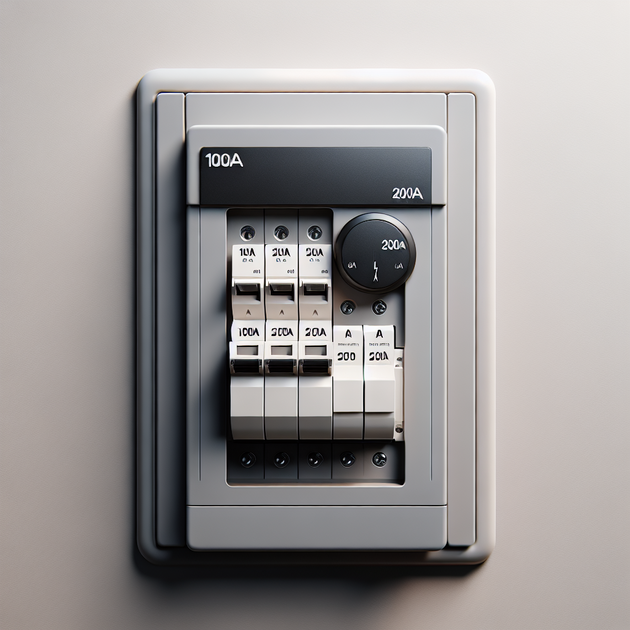Ever looked at your home’s circuit breaker panel and wondered if that “100A” label is enough for modern living? With so many gadgets, appliances, and maybe even thoughts of an electric car in the future, it’s a fair question. Let’s break down what 100A service really means, when a 200A upgrade makes sense, and what you should consider before calling an electrician.
What Does a 100A Service Actually Mean?
The “100A” stamped on your electrical panel stands for 100 amperes—the maximum electric current your home’s main panel is designed to safely handle at any one time. Decades ago, this was standard for most houses. Today, with more tech in every room, it’s natural to wonder if that’s still enough.
Most average-sized homes built before the 1990s have a 100A service. It’s usually fine for basic needs: lights, outlets, a fridge, washer/dryer, and maybe a small air conditioner. But if you plan to add a hot tub, central air, or a car charger, you might bump up against that limit.
According to the National Fire Protection Association, overloading an undersized panel can be a fire risk. That’s why knowing what you have—and what you need—really matters.
When Is Upgrading to 200A Service Necessary?
Upgrading from 100A to 200A isn’t always a must. Here are some reasons people consider a 200A panel:
- Adding high-power appliances (like double ovens or tankless water heaters)
- Installing central air conditioning or electric heat
- Future-proofing for electric car charging or solar panels
- Renovating or expanding the home with extra rooms or a workshop
- Experiencing frequent tripped breakers or dimming lights when using multiple devices
On the flip side, if you don’t plan to add more major appliances and your current setup isn’t causing issues, 100A may be fine.
Cost and Considerations for a Panel Upgrade
The cost of upgrading from 100A to 200A can range from $1,500 up to $4,000 or more, depending on your area and what work needs to be done. This includes replacing the panel itself, possibly updating wiring to meet current code, and sometimes even coordinating with your utility company.
Here are some things to consider before making the leap:
- Home size and future plans: A larger home or major upgrades down the road? Lean toward 200A.
- Insurance and resale value: Some insurers prefer homes with modern electrical panels. It can also make your house more attractive if you sell.
- Local codes: Some towns require higher amp service for renovations. Always check requirements in your area (your electrician should know).
- Your current electrical load: An electrician can do a “load calculation” to see if you’re close to maxing out your panel.
For more about electrical panel upgrades and safety, check out this guide from State Farm. It walks through key reasons for upgrading and what’s involved.
A Real-Life Example: Why One Family Chose to Upgrade
Picture this: A couple moved into a charming 1950s bungalow with a 100A service. At first, everything was fine—they ran the basics without a hitch. But after installing central air and thinking about adding an EV charger in the garage, they started tripping breakers whenever the dryer ran at the same time as the oven. Their electrician walked them through their options. In the end, they chose to upgrade to a new 200A panel. Not only did it solve their nuisance trips, but it also gave them peace of mind—and made their home ready for future tech.
Should You Upgrade Your Home’s 100A Service?
For many people, sticking with a well-maintained 100A service is just fine—especially in smaller homes without big power demands. But if you’re planning any major upgrades or want to make your place “future proof,” moving up to 200A is a smart investment.
Here’s a quick recap:
- If you’re constantly tripping breakers or want to add high-powered appliances—consider an upgrade.
- If you’re not running into issues and don’t expect big changes—a safe, inspected 100A panel can still do the job.
- Always get advice from a licensed electrician before making a decision.
So—how much electricity does your home really need? And do you see yourself adding more gadgets in the next few years? Share your thoughts or questions below!

Leave a Reply